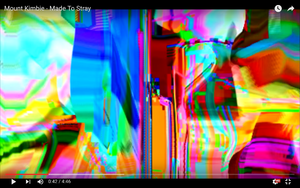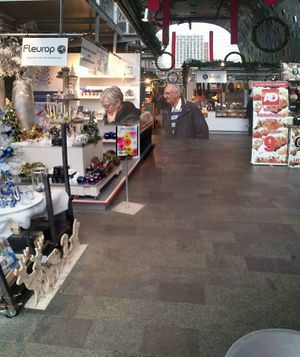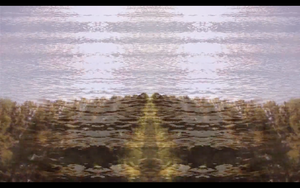User:Kerem
Contents
Lab
24-05-2016 Lab 1 Measuring Voltage met Mikki
Batterij= 9V > LED = 3.17 V + Weerstand = 5.55 V
Process
Name:Kerem
Email: 0897689@hr.nl
The Moment I knew what I wanted to do
Via zijn albumcover artworks ben ik Leif Podhajsky tegengekomen en ben zo ook gestuiterd op de videoclips die hij maakt. Hierin krijgt hij het voor elkaar muziek en beeld volledig samen te laten smelten, waardoor ik als kijker er totaal in wordt gedompeld. Ik wil graag als video artist met beeldexperimenteren en zo ook mijn liefde voor muziek aanvullen door het zichtbaar te maken.
What do I make?
Tot nu toe heb ik korte films gemaakt en videomontages waar ik Motion Graphics technieken toepas. Ook experimenteer ik graag met foto's maken
What is your topic of interest
Terugkomende thema's zijn natuur, dromen en surrealisme. Ik werk graag met muziek, dus ik zoek naar manieren hoe ik beeld met muziek kan samensmelten.
What is my Medium?
De camera en software zoals After Effects & Premiere Pro
First Concept Draft
I want to create an installation where people can find spiritual enlightenment. The installation will be a space where people can walk in and as they pass different elements of nature, each element will come to life and speak its wisdom over the viewer. Each will come to life in its own way, for instance:
Earth - For this I want to make two plates onto each other and the one on the top will contain a cut-out text with the wisdom of the earth. At first there will be sand on top of the plates, but when Earth comes to life, the plates will divide and the sand will fall through the cut-out, revealing the text.
Fire -
Water -
Wind -
This idea comes forth from my interest in nature and when I read a story where a conversation between a sheep and the wind happens, I was remembered that nature can be personified and be a character in a story.
Technique
The elements will come to live as they sense passengers walking by. Sensors will be connected to the arduino > that will activate relays to turn on machines/motors/devices.
Step 1: Sensor to Arduino
_______________________________________________
- include <SharpIR.h>
SharpIR sharp(A2,25, 93, 1080); int dis=sharp.distance();
int x;
void setup() {
pinMode(13, OUTPUT); Serial.begin(9600); //initialize baud rate to 9600
}
void loop() {
x= analogRead(2); //read value from analog pin 2 Serial.println(x); //print the value on the screen
if(x > 300 && x < 600) {
// do something
digitalWrite(13, HIGH);
}
else {
digitalWrite(13, LOW);
}
//delay(200);
}
___________________________________________________
Second Concept Draft: Limitation
The concept above is too big to accomplish in the amount of time I have for this practice. So that's why I'm going to focus on a part of the concept, one element of nature: Earth. For the earth there will appear a text in the sand. This will happen by a wooden plate with a cut-out text underneath the sand that will go up, making the sand fall through the cut-out text. The wisdom of the earth will be that taking things slow will result in making bigger steps.
Process
First thing I wanted to check, is what it looks like if the plate goes up from underneath the sand. So I used my hands to lift it up. This was the result.
Second was to get a stepper motor to work. The construction would be the stepper motor spinning a round stick where rope is connected to, that is connected to the plate so the rope will lift the plate. In this picture you see the multiple ideas for construction.
For the stepper motor to work I tried working with Arduino and a TB6612FNG Breakout chip with the help of the Adafruit website: https://learn.adafruit.com/adafruit-tb6612-h-bridge-dc-stepper-motor-driver-breakout/using-stepper-motors
Here the connections are described to be connected as followed:
Vmotor to 12V (red wire) Vcc to 5V (orange wire) GND to ground AIN2 to Digital 4 AIN1 to Digital 5 BIN1 to Digital 6 BIN2 to Digital 7 PWMA and PWMB to Vcc (orange wire)
Then hook one stepper motor coil to Motor A (red and yellow) and the second coil to Motor B (green and gray/brown).
For me to have a better overview on how to connect everything, I made sketch on how the chips looks from the top:
After connecting everything as described, I had to run the arduino with an example patch from arduino itself. I used the Stepper_OneStepAtATime patch. It looks like this:
- include <Stepper.h>
// change this to the number of steps on your motor
- define STEPS 200
// create an instance of the stepper class, specifying // the number of steps of the motor and the pins it's // attached to Stepper stepper(STEPS, 8, 9, 10, 11);
void setup()
{
Serial.begin(9600);
Serial.println("Stepper test!");
// set the speed of the motor to 30 RPMs
stepper.setSpeed(6);
}
void loop() {
Serial.println("Forward");
stepper.step(STEPS);
Serial.println("Backward");
stepper.step(-STEPS);
}
I loaded it onto the arduino, but while running, there was no response to be found in the stepper motor. I tried multiple things:
At first the numbers in the patch were different then the pins I connected them to, I changed that, still no response.
I tried to connect another motor, because maybe the motor was stuck, but that one also didn't respond.
I connected an external battery on the circuit, because maybe not enough power was running through. But it made no difference, and besides, on the description there arent any other power resources connected.
I also checked with the multimeter how much voltage and ampere was running through, and I couldn't detect any ampere. So I tried reconnecting things multiple times, but nothing helped.
But after almost 3 days trying to make it work and almost running out of time, I decided to build the construction first, in a way to make it work manually, so I have the chance to show how the construction works. Later on I would try to make it work automatically anyway, because that's essential on the concept. The text needs to appear slow and if the viewer can control the speed bij turning the handle fast, the message won't come through. I found a way to work with another chip, so that's something I want to try later on.
Constructing
For the construction I decided to build a box, this would be practical for 2 reasons: It will be a easy way to put the sand anywhere. If I would make a construction where the sand has to lay on the ground, it has to be cleaned every time after use. It would make the construction steady.
With a mindset of 'don't think so much, just do', i just did. As an audiovisual student I never really worked in the wood station before. So I just went and explained my plan to the constructor. He helped me with some machines, and because I never worked with wood before, I worked with MDF material for it being easier to work with and I liked the darker brown colour instead of the lighter brown with other woods (not knowing MDF is a synthetic material instead of natural. This way it worked contradicting to the concept of working with nature elements). ( PHOTO: wooden box)
The last step was connecting the cut-out plate with rope to the rotating stick and filling the box with sand. This was the endresult:
(photo endresult)
What would make it better?
First of all, the looks of the box. Now it is made with MDF material. But I would like to make it with clay so it is completely build out of earth elements (with a touch of electronics ofcourse). I also want to find out a way to not show the mechanics, that it will stay under the sand instead of above it. I am thinking of a floor jack system, usually used to lift things like cars. But then a small version and automatic. Another improvement would be to experiment with different heights per letter, so it will last even longer to fully see the text eventually. As for last I still need to find a solution how to make the text dissapear again. The first idea for that is to make 2 plates for that. One with cut-out, one that is engraved, those wil fit into each other and when the divide, the sand will fall in the engraved spaces, where it can be lifted up again, instead of falling underneath the plate, making it impossible to get the sand on top of the plate again.
Conclusion
With limited time and not so much knowledge into electronics, this past few weeks was more about getting to know the possibilities and the basics of electronics. Getting stuck in what seemed to be quite a simple technique to get a stepper motor running, made half of the magic of the work go away. So that's a real bummer, but I'm definitely not going to let this be like this and continue on trying to fix it. But still, for I am a audiovisual student, I can use the object for videos. I can only film the sand and leave everything around it out of frame. For titlesequences it is quite an interesting object to work with. And even though the endresult is just a prototype, I'm really happy with the things I learned this quarter. The basics and process with electronics, the way of thinking for making constructions and even working in the wood station.


